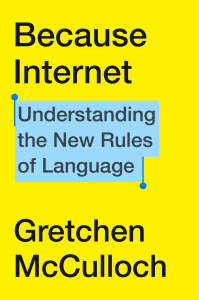Teresa Krastel argues for administering tests for ELs in their home languages
Imagine you and a traveling companion are visiting the Netherlands to see fine art. You tour a beautiful museum, but your guide speaks only in Dutch and all of her materials are in Dutch. Fluent in Dutch, your traveling companion has the opportunity to read about specific works, ask directions, and converse with docents. But since you do not speak Dutch, there is only so much you can glean from the tour, despite your deep interest in and knowledge of art history. In this situation, you simply do not have the tools to get what you need out of the experience. You find the entire visit frustrating.
Now imagine you are given a test, also in Dutch, assessing what you learned from your tour. The results of your test will determine whether or not you are invited to an exhibit and roundtable discussion on your favorite artist, about whose life and work you are quite knowledgeable. You would likely do poorly on the test, but it is not an accurate reflection of your knowledge. Additionally, based on your score, you would likely not be invited to participate in the discussion, although your knowledge could be very insightful in such a session. If someone provided a tour and an assessment in your native language, you could truly demonstrate your understanding. Even with something low stakes, like this fictional scenario, the situation sounds unfair and inequitable. However, this is what happens on a much larger scale to K–12 English learners (ELs) every single day when they are administered tests in English. Just as a test in your native language of your knowledge of the fine art in the Dutch museum would have been more accurate and reliable for you, for ELs, assessments in their home languages are crucial in providing reliable and accurate information about their knowledge. To get a valid measure of ELs, assessments must be offered in the students’ home languages.
What Is at Stake for Teachers and Students?
At the heart of this decision is equity and inclusion. As of 2015, there were more than 5 million ELs in the U.S., close to 10% of the entire student population, and the number continues to rise. Of those students, about 77% speak Spanish at home (NCES, 2019). These students should have the opportunity to engage with the material, and feel welcome in their classrooms, just like their English-speaking peers.
To improve student agency and buy-in, the needs and cultural background of ELs should be acknowledged and taken into account.
This is also an issue of accurate measurement. Administering ELs’ tests in English raises the question of whether educators are measuring English proficiency or the subject in question. For example, the language components of a math story problem could mask a student’s ability to demonstrate understanding of the skills in question.
As research demonstrates, this can ultimately impact assessment reliability for ELs. Since these English assessments are often used to inform instruction, determine grouping, measure proficiency, and screen for interventions, ELs and their classroom teachers have an incomplete portrait of the students’ true strengths, skills, and needs if they only use one data point.
Additionally, students come into classrooms at different points in time with different levels of English proficiency and different educational backgrounds or experiences. Student variability is something every classroom teacher contends with, but ELs add another layer of complexity. A measure in a student’s home language provides an additional data point for ELs, regardless of where they are in their learning.
Adapting and Developing New Content
The solution to this multifaceted issue sounds simple on paper—provide assessments for students in their home languages. In some instances, it is possible to translate an assessment item directly from one language to another. This is most common in the context of math, where the content is the same regardless of the language of instruction. Math is often called a universal language for this reason. In other cases, a particular skill might be relevant in multiple languages, but linguistic or cultural differences make translation problematic. To get an accurate measurement of how students perform in their home languages, particularly in reading, it is imperative districts and schools use assessment solutions that go a few steps further.
First, building any type of assessment starts with defining the purpose and claims that the assessment supports. When developing a version of the tests in a new language, it is critical the new assessment meet the same purpose, structure, and claims as the test in English, while addressing the constructs unique to the second language. High-quality assessment solutions must reflect these nuanced differences and can be achieved by transadapting English items as well as developing new items in the students’ native languages.
Transadaptation is the process of adapting content for cultural differences, parallel structure, and improved clarity. For example, for Spanish-speaking students, a reading assessment with a passage about snowshoeing or a math item that asks students to measure in inches may be incongruous with their lived experience. In this case, elements of the questions may have to be rephrased and adjusted to eliminate potential cultural biases as well as to include elements of their own cultural experience.
Following that, brand-new authentic items must be written to address constructs that may only appear in certain languages, as well as the inherent differences in how children from different language backgrounds learn to read. For instance, foundational reading instruction in English typically includes a heavy emphasis on phoneme work—deconstructing words into their individual sounds. Spanish reading instruction tends to concentrate on the syllable level. High-quality assessments must address these theoretical foundations, particularly in tests for early learners. Building items that are more culturally and linguistically relevant is a way to further engage and improve agency among ELs.
Finally, transadapted and newly composed items undergo several quality-assurance checks to ensure validity, complexity, and cultural accuracy.
How Will This Benefit Students?
Assessments like these can provide data points for students new to the school or for those students who do not have enough English proficiency to participate meaningfully in English assessment. This reliable assessment data may also provide key insights into questions educators may have, such as “Where are my students on their path to academic achievement?” or “What specific instructional actions can I take to support my students’ growth?” Insights like these can be the bridge to instructional next steps, to help teachers make informed decisions for classroom instruction. For more on this topic, see Durán (2008), Abedi (2011), and Trumbull and Solano-Flores (2011).
Student achievement does not depend on language. Assessments in languages other than English provide educators with the equitable tools they need to understand, support, and engage more of their students. Students, in turn, get to bring their whole selves to the classroom and have a true opportunity to demonstrate just how much they know, all in a school or district where their language and culture are both respected and celebrated.
Given the rapidly changing demographics of our communities, a thoughtful assessment system should include high-quality Spanish-language assessments to provide valid measurements of math, reading,
and oral fluency for Spanish-speaking students. Our teachers need it. Our students deserve it.
References
Abedi, J. (2011). “Assessing English Language Learners: Critical Issues.” In M. del Rosario Basterra, E. Trumbull, and G. Solano-Flores (Eds.), Cultural Validity in Assessment, 49–71. New York, NY: Routledge.
Durán, R. (2008). “Assessing English-Language Learners’ Achievement.” Review of Research in Education, 32, 292–327. http://www.jstor.org/stable/20185119
National Center for Educational Statistics (2019). “English Language Learners in Public Schools.” https://nces.ed.gov/programs/coe/indicator_cgf.asp.
Trumbull, E., and G. Solano-Flores (2011). “The Role of Language in Assessment.” In M. del Rosario Basterra, E. Trumbull, and G. Solano-Flores (Eds.) Cultural Validity in Assessment, 22–45. New York, NY: Routledge.
Teresa Krastel, PhD, is the Spanish solution lead for NWEA. She has taught Spanish at all levels from grades 7–12, as well as at the undergraduate and graduate levels, and English as a second language (ESL). Throughout her career, she has trained and mentored international teaching staff and has provided numerous faculty development workshops on accommodating student needs in the language classroom. She earned her PhD in Hispanic linguistics and literatures from the University of Massachusetts at Amherst. Her research interests include curriculum and instruction and second-language acquisition, bilingualism, and dialectology. Teresa brought her talents to NWEA in 2010 and joined the staff in 2016.















